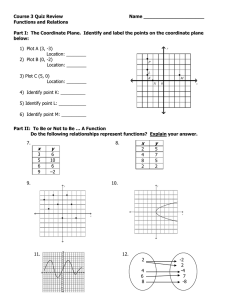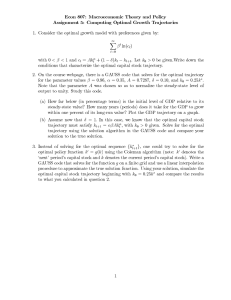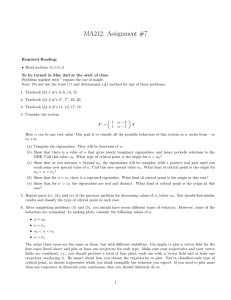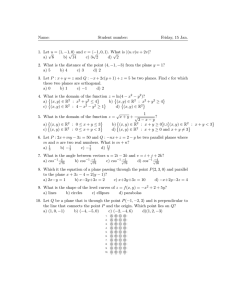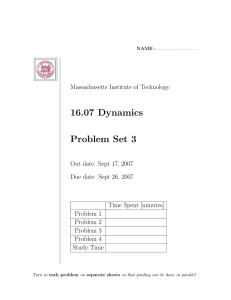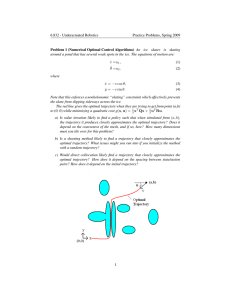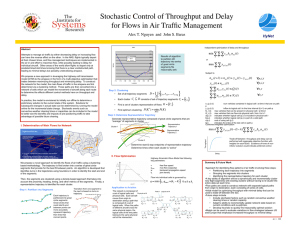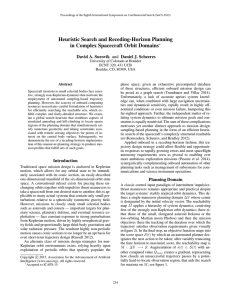Computer Homework
advertisement
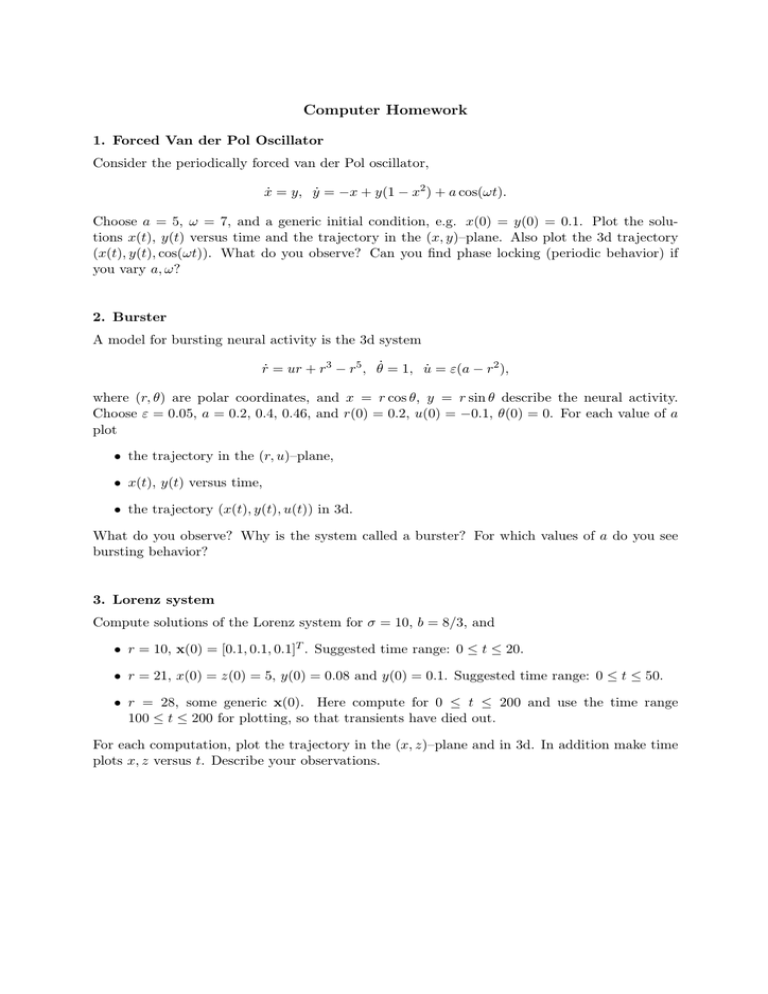
Computer Homework 1. Forced Van der Pol Oscillator Consider the periodically forced van der Pol oscillator, ẋ = y, ẏ = −x + y(1 − x2 ) + a cos(ωt). Choose a = 5, ω = 7, and a generic initial condition, e.g. x(0) = y(0) = 0.1. Plot the solutions x(t), y(t) versus time and the trajectory in the (x, y)–plane. Also plot the 3d trajectory (x(t), y(t), cos(ωt)). What do you observe? Can you find phase locking (periodic behavior) if you vary a, ω? 2. Burster A model for bursting neural activity is the 3d system ṙ = ur + r3 − r5 , θ̇ = 1, u̇ = ε(a − r2 ), where (r, θ) are polar coordinates, and x = r cos θ, y = r sin θ describe the neural activity. Choose ε = 0.05, a = 0.2, 0.4, 0.46, and r(0) = 0.2, u(0) = −0.1, θ(0) = 0. For each value of a plot • the trajectory in the (r, u)–plane, • x(t), y(t) versus time, • the trajectory (x(t), y(t), u(t)) in 3d. What do you observe? Why is the system called a burster? For which values of a do you see bursting behavior? 3. Lorenz system Compute solutions of the Lorenz system for σ = 10, b = 8/3, and • r = 10, x(0) = [0.1, 0.1, 0.1]T . Suggested time range: 0 ≤ t ≤ 20. • r = 21, x(0) = z(0) = 5, y(0) = 0.08 and y(0) = 0.1. Suggested time range: 0 ≤ t ≤ 50. • r = 28, some generic x(0). Here compute for 0 ≤ t ≤ 200 and use the time range 100 ≤ t ≤ 200 for plotting, so that transients have died out. For each computation, plot the trajectory in the (x, z)–plane and in 3d. In addition make time plots x, z versus t. Describe your observations.



